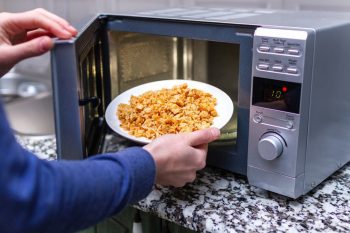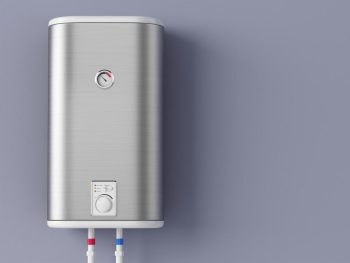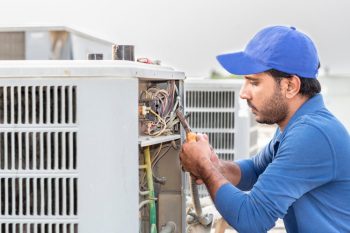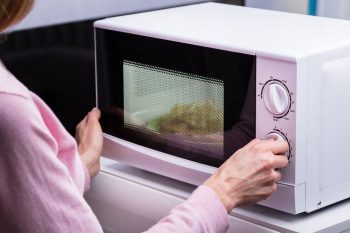
Microwaves are a staple in nearly every household, providing a convenient way to heat food quickly. However, like any appliance, they can break down over time. It’s important to know how to identify signs of a broken microwave to prevent potential hazards and determine whether it needs repair or replacement. This comprehensive guide will help you understand how to determine if your microwave is broken.
To determine if your microwave is broken, listen for unusual noises, check if your food is cooking properly, and look out for smoke, sparks, or burning smells. Also, if the controls are unresponsive or the door isn’t closing properly, your microwave might be broken. If you notice any of these signs, it’s best to consult a professional for further assistance.
Common Signs of a Broken Microwave
From unusual noises to unresponsive controls, several signs may indicate that your microwave is malfunctioning. Here are some of the most common issues you might encounter:
- Unusual Noises: Microwaves should operate relatively quietly. If you hear loud grinding, buzzing, or humming noises, it could indicate a problem with the internal components such as the drive motor, magnetron, cooling fan, or high voltage diode.
- Food Not Cooking Properly: If your food isn’t heating evenly or takes longer to cook, there might be an issue with the microwave’s heating components.
- Smoke, Sparks, or Burning Smells: These are signs of a serious and urgent problem. If you experience any of these, stop using the microwave immediately and unplug it.
- Unresponsive Controls: If the microwave’s touchpad or buttons are not responding, there might be an issue with the keypad or control board.
- Door Not Closing Properly: A microwave will not heat until the door is properly closed. If the door latch is broken or the door isn’t closing correctly, it might need repair or replacement.
How to Troubleshoot a Microwave
Before calling in a professional, you can perform some preliminary checks to understand the issue better.
- Check the Power Source: Ensure the microwave is properly plugged into a working power socket.
- Examine the Door: Make sure the microwave door is completely shut, as microwaves will not work unless the door is properly closed.
- Inspect the Microwave Plate: If the microwave plate is not turning, inspect the plate, guide roller, and coupler for any damage or misalignment.
- Listen for Unusual Noises: Strange noises could indicate issues with the drive motor, magnetron, cooling fan, or high voltage diode.
- Confirm Proper Ventilation: Ensure that the microwave’s vents are not blocked or covered, as this can lead to overheating and malfunction.
Remember that microwaves can store thousands of volts of electricity in their capacitors even when unplugged, posing a risk of electric shock. If you are not confident in your ability to troubleshoot or repair the microwave, it is best to consult a qualified technician for assistance.
When to Call a Professional
While some minor issues can be fixed without professional help, certain problems require the expertise of a trained technician. For instance, if your microwave isn’t heating, making unusual noises, or sparking, it’s best to call a professional. Similarly, if the door isn’t closing properly or the controls are unresponsive, you should seek professional help.
The Cost of Repair
The cost of repairing a broken microwave can vary depending on the complexity of the issue and the cost of replacement parts. On average, you can expect to pay between $100 and $200 for repairs, including labor and parts. In some cases, if the repair costs exceed 50% of the replacement cost, it may be more cost-effective to replace the microwave.
Conclusion
Knowing how to identify a broken microwave is crucial to maintaining a safe and efficient kitchen. Regular cleaning and maintenance can help prevent many common microwave issues and extend the lifespan of the appliance. However, if you notice any serious problems, it’s always best to consult a professional. With this comprehensive guide, you’ll be well-equipped to determine if your microwave is broken and what steps to take next.
Frequently Asked Questions
What is the lifespan of a typical microwave?
The lifespan of a microwave can vary based on the brand, usage, and maintenance, but generally, a microwave can last between 5 to 10 years.
What is a magnetron and what does it do in a microwave?
A magnetron is a type of vacuum tube that generates microwaves. It’s the component in a microwave that actually generates the heat by emitting waves that excite the water molecules in food, causing them to vibrate and produce heat.
How often should I clean my microwave?
It is recommended to clean your microwave at least once every week to prevent the buildup of food particles and grease, which can cause problems over time. However, if there are spills or splatters, it’s best to clean them up immediately.
Is it dangerous to run a microwave empty?
Yes, running a microwave empty can cause damage to the appliance. Without food to absorb the microwaves, they can bounce back to the magnetron and cause it to overheat, which could lead to a fire.
Can a microwave cause cancer?
No, microwaves do not make food radioactive or cause cancer. They heat food by producing radio waves that are absorbed by water molecules in the food, causing them to vibrate and produce heat. This process does not alter the food’s structure in a way that would create carcinogens or make it radioactive.











